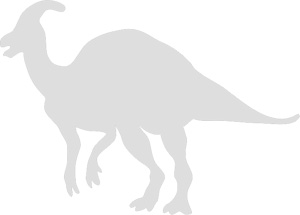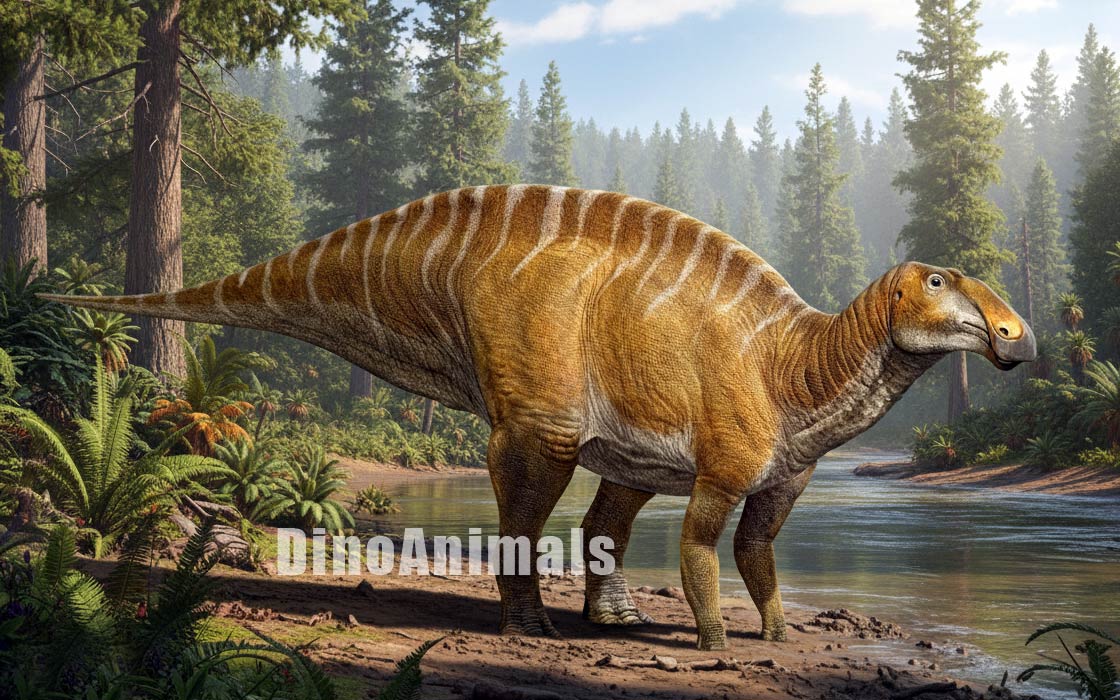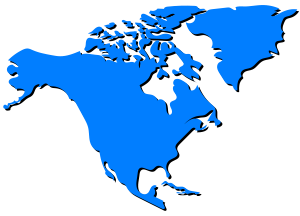Every month, 100,000 readers use the Dinosaur Database, but we receive no support from you. Developing and updating the database requires a lot of work. If you want it to remain open and be updated, please support us via the "Buy us a coffee" button available on every page or via the Support page.
Dinosaur: Ahshislesaurus wimani

| Length*: | 11 m | 36.1 ft |
| Weight*: | 5 t | 11,023 lb |
*The largest known specimen
Period
Epoch: Late Cretaceous
Stage: Late Campanian
Years: 83.6–72.1 Ma
Details
Status: valid
Author: Dalman et al.
Year: 2025
Distribution
Area: North America
Country: USA
Region: New Mexico
Formation: Kirtland
Description
Ahshislesaurus wimani
Ahshislesaurus wimani was a large saurolophine hadrosaurid dinosaur that lived in what is now the San Juan Basin, New Mexico, USA, during the Late Cretaceous period, approximately 75 million years ago (late Campanian stage). It was discovered in the Hunter Wash Member of the Kirtland Formation, a sedimentary deposit known for its fluvial and floodplain facies preserving diverse Late Cretaceous vertebrates.
The name Ahshislesaurus derives from the Ah-shi-sle-pah Wilderness, a phonetic transliteration of the Navajo áshįįh łibá (“salt, it is gray”), combined with Ancient Greek “sauros” (lizard). The species name wimani honors Swedish paleontologist Carl Wiman, who studied vertebrate fossils from the San Juan Basin.
As a member of Saurolophinae within Hadrosauridae, Ahshislesaurus represents a basal kritosaurin, contributing to understanding Laramidian hadrosaur diversity.
Etymology
The genus name “Ahshislesaurus” is derived from the Ah-shi-sle-pah Wilderness in New Mexico, a phonetic rendering of the Navajo phrase áshįįh łibá meaning “salt, it is gray,” combined with the Ancient Greek “sauros,” meaning “lizard.” The species name “wimani” honors Carl Wiman, a Swedish paleontologist known for his research on vertebrate fossils from New Mexico’s San Juan Basin.
Physical Characteristics
Ahshislesaurus wimani was a large hadrosaurid, estimated up to 11 m (36 ft) in length and weight 3–5 t (6,600 – 11,000 lb). The holotype preserves cranial elements indicative of a robust skull adapted for herbivory.
Key anatomical features include:
- Broad, toothless beak and complex dental batteries with 45 tooth positions, each featuring a prominent straight vertical ridge.
- Lack of decorative tube-like crests, with a small bump over the snout and low narial crest.
- Deep anterior mandible, contrasting with narrower fronts in other hadrosaurids.
- Robust quadrate inclined posteriorly at the dorsal end; long, uniformly wide quadratojugal flange on the jugal with a convex, broad posterior process.
- Cervical vertebrae with sub-triangular neural spine on the axis, reduced spines on following vertebrae, opisthocoelous centra, and specific pre- and postzygapophyseal morphologies.
These traits suggest efficient plant processing in floodplain environments.
Diet and Feeding Habits
As a herbivorous hadrosaurid, Ahshislesaurus wimani fed on a variety of plants in its Late Cretaceous ecosystem. Its diet likely included:
- Conifers, ferns, and horsetails, abundant in Campanian floodplains.
- Flowering plants (angiosperms), increasingly common.
- Tough vegetation, ground with dental batteries and beak.
It browsed at various heights using its flexible neck and bipedal/quadrupedal stance.
Habitat and Distribution
Ahshislesaurus wimani lived in what is now northwestern New Mexico, USA, specifically in the Hunter Wash Member of the Kirtland Formation, San Juan Basin.
Its environment was characterized by:
- Fluvial channels and overbank deposits, with seasonal flooding.
- Humid subtropical climate supporting lush vegetation.
- Diverse fauna including other hadrosaurs, ceratopsians, and theropods.
The Kirtland Formation preserves a rich Laramidian assemblage.
Paleoenvironment
The site was a dynamic floodplain during the late Campanian, with rivers and wetlands fostering high biodiversity. The assemblage includes turtles, crocodylians, and dinosaurs, reflecting a productive habitat.
Behavior and Social Structure
No direct evidence, but hadrosaurids likely formed herds. Possible behaviors include:
- Gregarious living for protection and migration.
- Vocalizations via nasal structures for communication.
- Facultative quadrupedality for foraging.
As a saurolophine, it occupied mid-to-large herbivore niches.
Discovery and Research
The holotype (USNM VP-8629) was discovered in 1916 by J. B. Reeside Jr. near Kimbeto Wash, San Juan County, New Mexico. Described in 2025 by Dalman et al., it includes posterior skull, left lower jaw, and cervical vertebrae 2–4. Referred material includes NMMNH P-25057 (partial postcrania) and isolated bones.
Phylogenetic analyses confirm its kritosaurin placement.
Discovery Context
Unearthed in Hunter Wash Member outcrops, the material dates to ~75 Ma. Additional finds from the same formation support taxonomic assignment.
Significance and Interesting Facts
- New basal kritosaurin, sister to Naashoibitosaurus.
- First hadrosaurid named from Hunter Wash Member.
- Dental ridges aid studies of hadrosaur feeding mechanics.
- Contributes to Laramidian saurolophine diversity.
- Honors Carl Wiman, linking early 20th-century research.
Conclusion
Ahshislesaurus wimani was a large saurolophine from the Late Cretaceous of New Mexico, exemplifying kritosaurin evolution in Laramidia. Its robust skull and dental features highlight adaptations for herbivory. This 2025 description enriches understanding of Campanian hadrosaur communities.
Locations
Sources
Material: Incomplete diagnostic skull, right jugal, quadrate, left lower jaw, cervical vertebrae 2–4
References: Dalman et al. 2025. A new saurolophine hadrosaurid (Ornithischia: Hadrosauridae) from the Upper Cretaceous (Campanian) Hunter Wash Member, Kirtland Formation, San Juan Basin, New Mexico.




